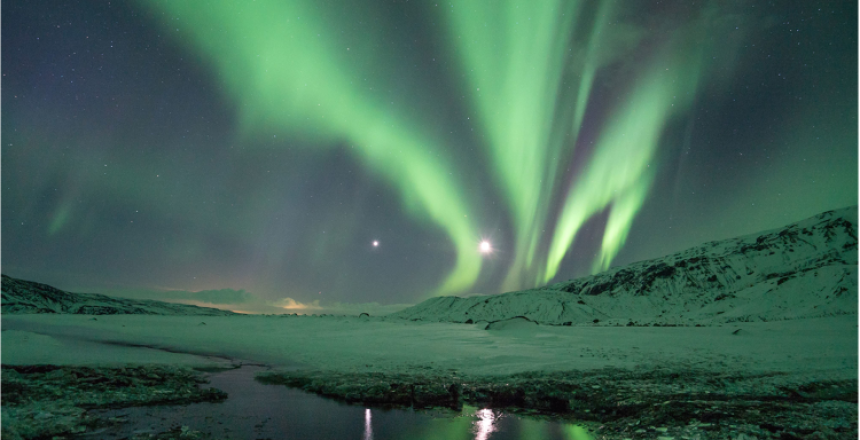In recent months, there have been sightings of the Northern Lights up to very low latitudes (for example in regions of northern France, in US states such as Texas and Florida or Soviet cities such as Moscow and St. Petersburg) where they generally do not reach. The reason for these sightings is increased solar activity which is near its maximum.
In fact, the Sun has a cycle of magnetic activity, due to its magnetic field, which reaches a maximum and a minimum of activity over the course of 11 years. After this period of time, at minimum activity, the magnetic field changes polarity, transforming the magnetic north pole into the south pole and vice versa and the cycle starts again for another 11 years. Why exactly 11 years? We do not know yet.
The next maximum of the current cycle of solar magnetic activity is expected for the end of 2023 or for the next year, 2024, depending on the forecast models which are mainly based on past cycles and on the analysis of the intensity of the current one course. Therefore, this is the most suitable period to see the Sun full of sunspots, which are precisely the index of its magnetic activity and to admire the Northern Lights which are instead due to the interaction of the solar wind with the Earth's magnetic field.
The solar wind is a constant flow of charged particles (positive and negative) that is emitted by the Sun and reaches the boundaries of the solar system, defining them. All bodies in the solar system therefore interact with this solar wind, including the Earth. During periods of greater solar magnetic activity, it may happen that the Earth, in addition to being constantly hit by the solar wind, is also subject to the flow of particles (and sometimes also magnetic field) which instead come from eruptive events that occur on the Sun with frequency greater. In this case, the charged particles are thrown towards Earth at speeds much greater than those of the solar wind.
Quando queste particelle incontrano il campo magnetico terrestre vengono dirette da quest’ultimo verso i poli della Terra e da lì entrano nella nostra atmosfera terrestre, interagendo con le particelle che la costituiscono e che, eccitate, emettono la luce e i diversi colori che ammiriamo nell’aurora boreale. Dunque, maggiore è l’attività solare, maggiore sarà la possibilità di vedere le aurore e di vederle anche a latitudini più basse perché più l’evento eruttivo che avviene sul Sole è forte, più le particelle provenienti dal Sole entreranno nell’atmosfera terrestre e ingrosseranno l’alone aurorale che si forma ai poli, permettendone la visione anche a latitudini più basse.
In one of the most famous solar eruptive events, the so-called Carrington storm of 1859, the aurora was visible for example in Rome, Jamaica, Hawaii and Cuba.


2 risposte
Ho seguito con grande interesse la diretta di questo pomeriggio con Passione Astronomia, la quale è stata estremamente chiara e illuminante. Essendo un’insegnante di scienze presso il Liceo Scientifico G. Peano di Monterotondo RM, laureata in biologia, mi trovo spesso ad affrontare anche l’insegnamento dell’astronomia. Tuttavia, talvolta mi sento meno preparata nel trasmettere la passione per lo studio del cielo. Scienziate come Lei, che è anche un’eccellente divulgatrice scientifica, mi aiutano enormemente nel migliorare le mie competenze didattiche. Desidero ringraziarla di cuore e complimentarmi per i suoi straordinari studi.
Carissima Maria Gaetana, la ringrazio tanto per questo suo messaggio. Sono contenta che la mia conoscenza possa essere condivisa in modo da arrivare a quante più persone possibili. La abbraccio e un saluto ai suoi studenti!